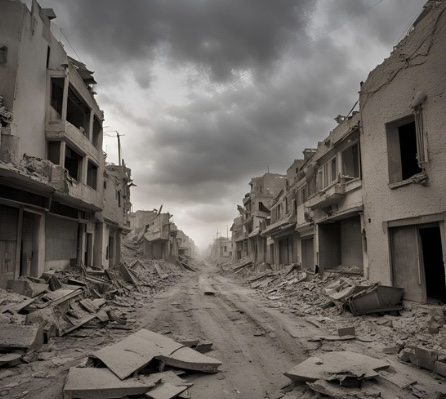Fear of regional conflict formed part of UN peacekeepers warnings in Lebanon on Saturday. They cautioned against a “catastrophic” as Israeli forces clashed with Hezbollah and Hamas militants on two fronts. This occurred on the holiest day in the Jewish calendar.
Israel faced significant diplomatic backlash. Incidents in southern Lebanon left five Blue Helmets injured. The Lebanese health ministry reported Israeli airstrikes. They struck two villages near Beirut, killing nine people.
Earlier, Israel advised residents in southern Lebanon to stay away. Troops were engaged in battle with Hezbollah militants. The conflict has resulted in over 1,200 deaths since September 23. More than a million people fled their homes.
Israeli military spokesman Avichay Adraee warned residents. He urged, “For your protection, do not return to your homes.” He added that going south could endanger lives.
Hezbollah launched missiles into northern Israel. Air raid sirens sounded as the military intercepted a projectile.
UNIFIL spokesman Andrea Tenenti expressed concern. He feared that an Israeli escalation against Hezbollah could spiral out of control. This could lead to a regional conflict with severe consequences.
The UN force reported five peacekeepers wounded in just two days. Tenenti noted that “a lot of damage” had occurred to UN posts. In Israel, markets closed and public transport halted. Observant Jews fasted and prayed for Yom Kippur.
Violence could lead to regional conflict
After the holiday, attention shifted back to potential retaliation against Iran. Iran had launched around 200 missiles at Israel on October 1.
Following the October 7 attacks, Israel began its assault on Gaza. This marked its worst-ever attacks from Iran-backed Hamas militants. A ground offensive against Hezbollah started on September 30.
On Friday, Israel faced criticism from the UN and Western allies. They condemned what was labeled a “hit” on a UN peacekeeping position. Two Sri Lankan peacekeepers were injured in this incident.
Israel’s military responded to what they deemed an “immediate threat.” They promised a “thorough review” of their actions. Sean Clancy, chief of staff of the Irish military, stated it was “not an accidental act.” French President Emmanuel Macron believed peacekeepers were “deliberately targeted.”
Lebanese Prime Minister Najib Mikati announced plans. He aimed to ask the UN Security Council for a new resolution. This would call for a “full and immediate ceasefire.”
Lebanon’s military reported an Israeli strike that killed two soldiers. In a show of support for Hezbollah, Iranian parliament speaker Mohammad Bagher Ghalibaf visited Lebanon. His visit signaled Tehran’s defiance.
Regional conflict would worsen civilian suffering in Gaza
Israeli Defence Minister Yoav Gallant vowed a “deadly, precise and surprising” response. The United States urged a “proportionate” reaction. President Joe Biden advised Israel to avoid striking Iranian nuclear facilities.
Hezbollah intensified its fire on Israel. This came in support of Hamas after the October 7 attacks. According to an tally, 1,206 people died in the initial attacks, mostly civilians.
The military campaign in Gaza caused significant devastation. The Hamas-run health ministry reported 42,175 deaths, the majority being civilians. Israeli operations continued in Gaza. The army laid siege to the area around Jabalia in the north.
Israeli military spokesman Adraee issued another evacuation warning, according to AFP. He described the area near Jabalia as a dangerous combat zone. Residents were ordered to move to a humanitarian zone in southern Gaza.
Some residents expressed reluctance. They felt unsafe moving south. Sami Asliya, a 27-year-old, stated, “There is no safe place.” He mentioned risks in both the south and north.
On Friday, Gaza’s civil defense agency reported 30 deaths from strikes. This included casualties in schools serving as shelters. Heavy shelling, explosions, and gunfire were reported in Gaza City’s Zeitoun neighborhood.

Leave feedback about this